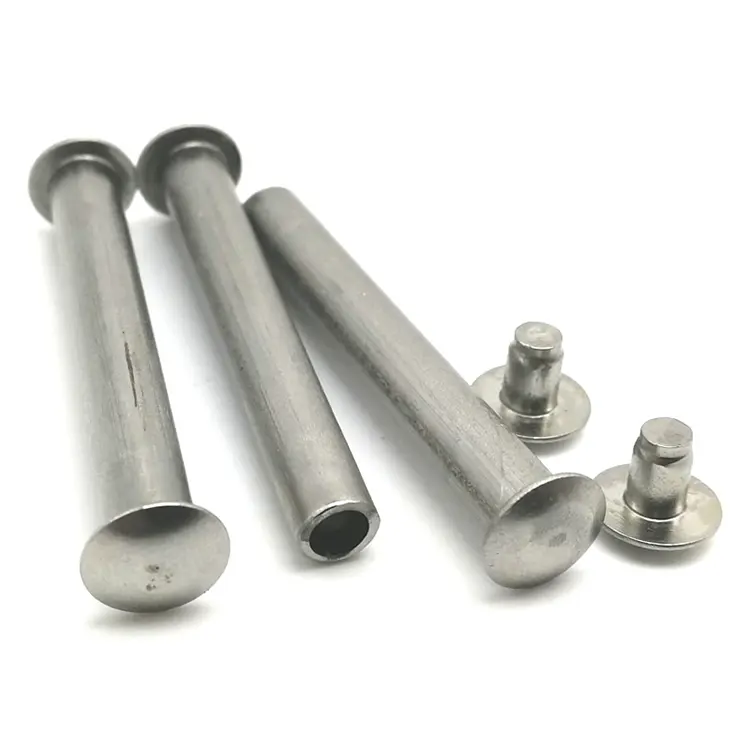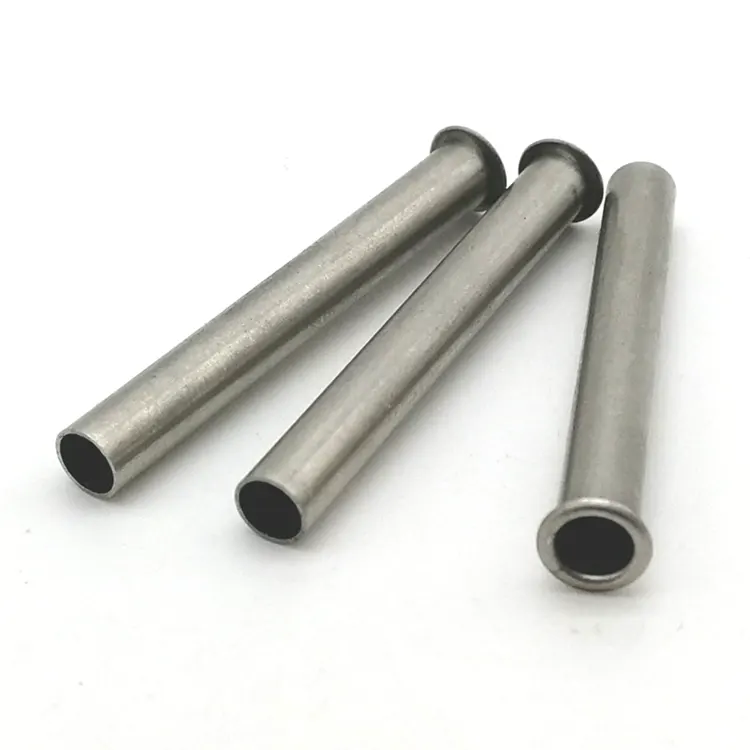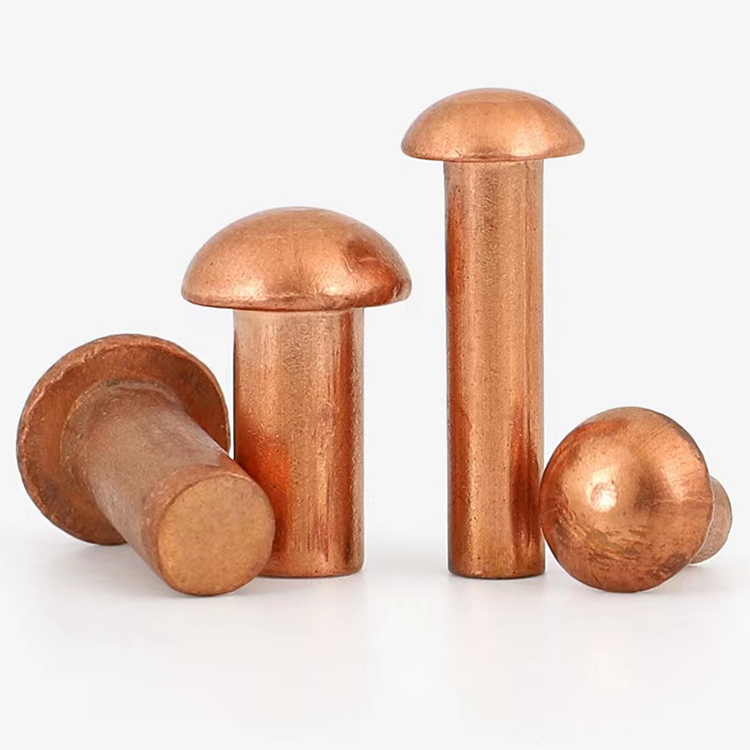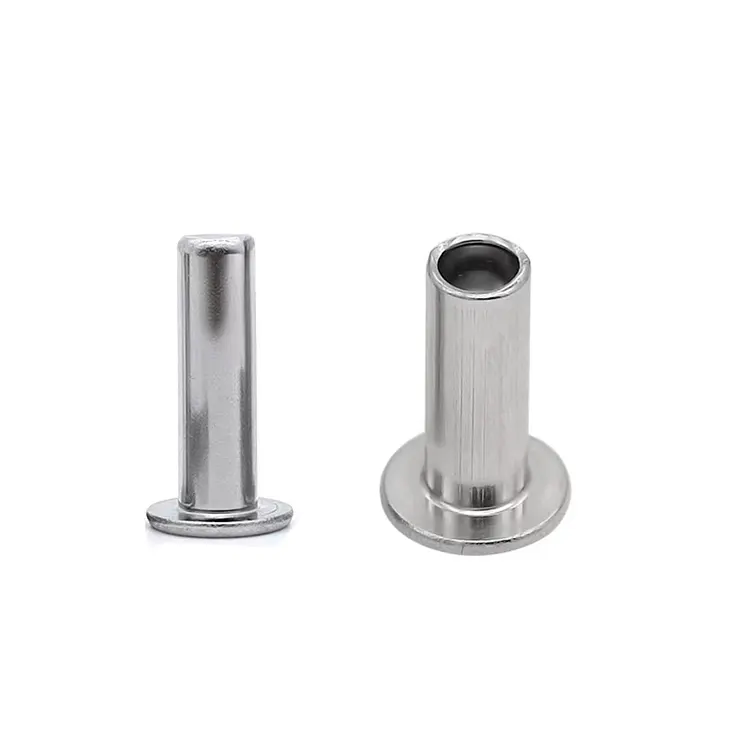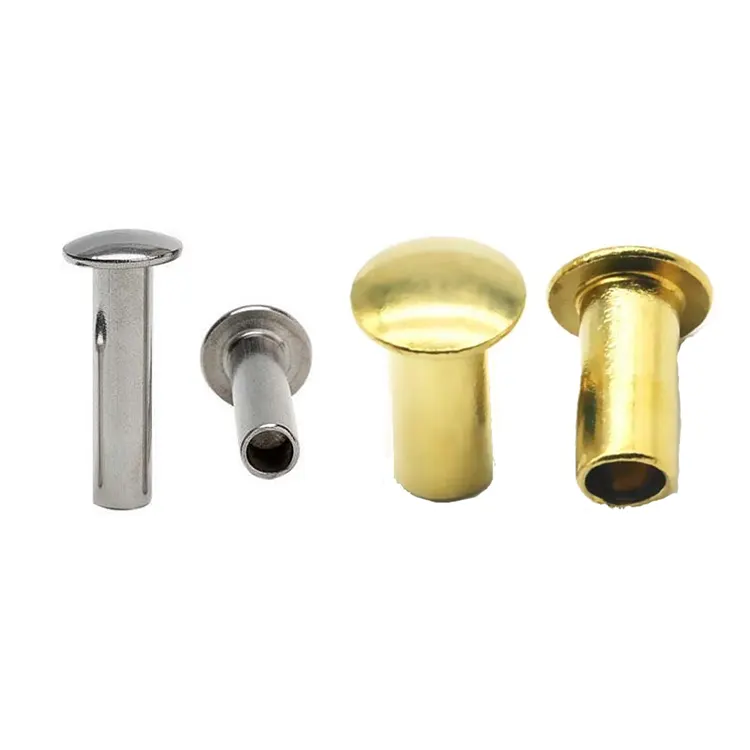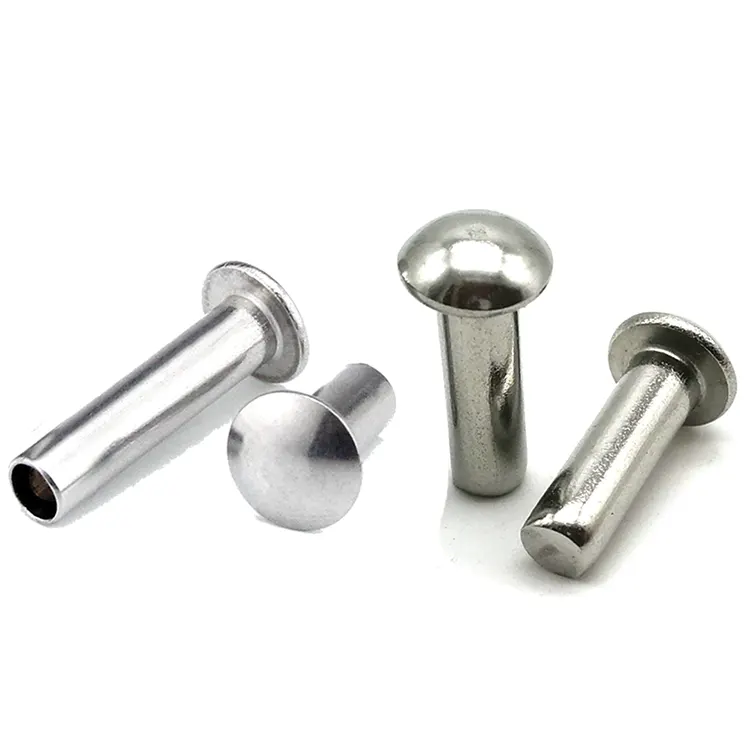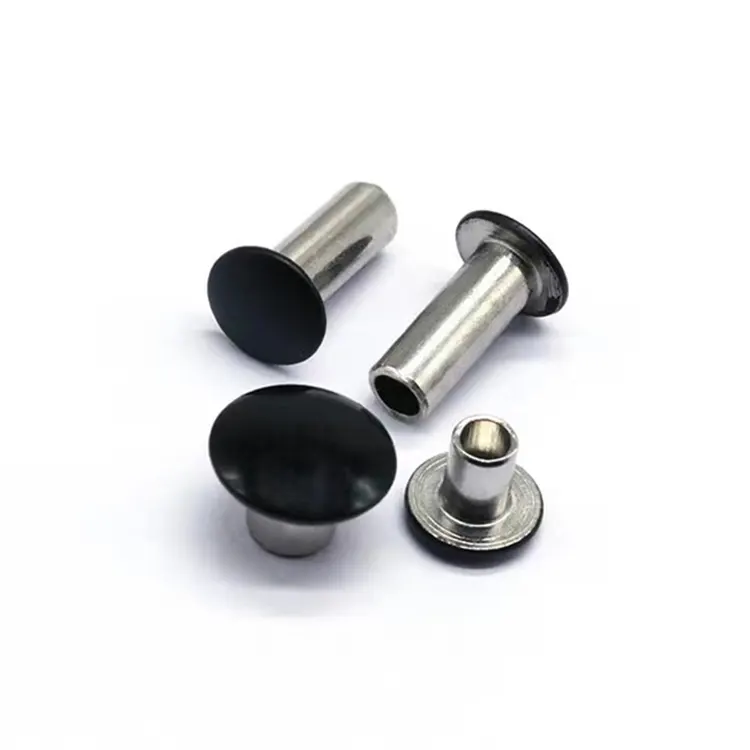Rivets speciali
One of Chinese manufacturer of Special Rivets, offering excellent quality at a competitive price, is Notin. Feel free to get in touch.
In the field of mechanical manufacturing and assembly, rivets are a common fastener used to professionally connect two or more parts. According to the degree of standardization, rivets can be divided into two categories: standard rivets and non-standard rivets. The size, shape and material of standard rivets are uniformly specified, while non-standard rivets are customized according to specific needs. The following will introduce the characteristics and applications of non-standard rivets from multiple aspects.
What are non-standard rivets?
Non-standard rivets are also called special rivets. They refer to rivets that do not meet national standards or industry general standards. Their size, material, structure and other parameters are designed and manufactured according to the specific needs of customers. Due to the different connection requirements of different industries and equipment, standard rivets may not meet the requirements of certain special scenarios, so non-standard rivets came into being.
What are the characteristics of special rivets?
(1) Strong customization: Non-standard rivets can be personalized according to factors such as the use environment, stress conditions, and assembly methods to ensure that they perform well in actual applications.
(2) Diverse materials: In addition to common carbon steel and stainless steel, non-standard rivets can also be made of special materials such as aluminum alloy, copper alloy, titanium alloy, etc. to meet different corrosion resistance, strength and weight requirements.
(3) Flexible structure: The structure of non-standard rivets can be adjusted according to needs, such as head shape, stem diameter, length, etc., and can even be designed to be hollow, semi-hollow or other special shapes.
- View as
Rivetti a testa piatta in acciaio inossidabile
Nuote Metals è specializzata nella produzione di rivetti a testa piatta in acciaio inox. Utilizziamo materiali SUS304 o SUS316L, ottenendo una superficie liscia e priva di graffi. Le dimensioni vengono rispettate rigorosamente sui disegni del cliente e il nostro reparto di controllo qualità controlla rigorosamente sia l'aspetto che le dimensioni per garantire che ciascun rivetto soddisfi le specifiche del cliente. I rivetti a testa piatta in acciaio inossidabile sono realizzati principalmente in acciaio inossidabile, una lega nota per la sua resistenza alla corrosione, alle alte temperature e all'elevata resistenza. Ciò garantisce che questi rivetti in acciaio inossidabile a testa piatta rimangano stabili anche in ambienti umidi, acidi o alcalini, resistendo alla ruggine o alla deformazione.
Per saperne di piùInvia richiestaRivetti a testa svasata in acciaio inossidabile
i rivetti a testa svasata in acciaio inossidabile sono realizzati in acciaio inossidabile per garantire resistenza alla corrosione e durata. I materiali comuni in acciaio inossidabile includono 304 e 316 e il materiale specifico da utilizzare dipende dall'ambiente e dai requisiti dell'applicazione specifica. Nuote Metals è specializzata nella produzione di rivetti in acciaio inossidabile, comprese varie forme di testa, come rivetti in acciaio inossidabile a testa piatta, rivetti in acciaio inossidabile con testa a cupola, rivetti in acciaio inossidabile con testa a fungo, rivetti in acciaio inossidabile con testa cilindrica e altro ancora. Accogliamo con favore le vostre richieste.
Per saperne di piùInvia richiestaRivetti sulle spalle
Nuote Metals produce e fornisce rivetti a spalla, chiamati per la loro somiglianza con i gradini. Con sede a Dongguan, in Cina, produciamo questi rivetti in una varietà di materiali, tra cui acciaio inossidabile, rame, ferro e alluminio. Tutti i rivetti a spalla sono realizzati secondo i vostri disegni o campioni per soddisfare le vostre specifiche esigenze di rivettatura. I nostri rivetti sono rifiniti con precisione e possono adattarsi a una varietà di trattamenti superficiali, tra cui galvanica, elettroforesi e anodizzazione.
Per saperne di piùInvia richiestaRivetti semicavi
Nuote Metals è un produttore di rivetti professionale con sede a Dongguan, in Cina, una città industrialmente sviluppata con comodi trasporti e una gamma completa di trattamenti superficiali. I rivetti semicavi sono elementi di fissaggio comunemente utilizzati caratterizzati da una sezione cava sul gambo. Questo design consente loro di adattarsi meglio alla deformazione dei materiali uniti durante il processo di rivettatura, migliorando così la resistenza e l'affidabilità del giunto. I rivetti semicavi sono ampiamente utilizzati nei settori manifatturiero automobilistico, aeronautico e navale, nonché nell'assemblaggio di componenti elettronici ed elettrodomestici.
Per saperne di piùInvia richiestaRivetti a testa tonda
I rivetti a testa tonda presentano un design unico della testa con una sporgenza semicircolare. Questa struttura distribuisce efficacemente lo stress quando il rivetto è sottoposto a forza, migliorando la stabilità della connessione. La testa rialzata facilita inoltre il posizionamento e l'allineamento durante l'installazione. Inoltre, i rivetti a testa tonda offrono un'eccellente resistenza alla corrosione e alla fatica, mantenendo prestazioni stabili nel tempo in ambienti difficili. Cerchi rivetti prodotti dalla Cina? Non esitate a contattare Nuote Metals, abbiamo più di 10 anni di esperienza lavorativa sui rivetti.
Per saperne di piùInvia richiestaRivetti verniciati a polvere
I rivetti colorati, noti anche come rivetti verniciati a polvere, sono rivestiti con rivestimento in polvere sulla testa del rivetto attraverso un processo di verniciatura a spruzzo ad alta temperatura. La vernice viene asciugata uniformemente per garantire una finitura che non sbiadisce. Questo tipo di rivetto richiede un alto livello di abilità nella cottura della vernice e una precisa corrispondenza dei colori. Dopo la rivettatura crea un colore omogeneo e bello, realizzando appieno il suo effetto decorativo.
Per saperne di piùInvia richiestaWhat are the characteristics of special rivets?
(1) Strong customization: Non-standard rivets can be personalized according to factors such as the use environment, stress conditions, and assembly methods to ensure that they perform well in actual applications.
(2) Diverse materials: In addition to common carbon steel and stainless steel, non-standard rivets can also be made of special materials such as aluminum alloy, copper alloy, titanium alloy, etc. to meet different corrosion resistance, strength and weight requirements.
(3) Flexible structure: The structure of non-standard rivets can be adjusted according to needs, such as head shape, stem diameter, length, etc., and can even be designed to be hollow, semi-hollow or other special shapes.
Manufacturing process of special rivets
The manufacturing of non-standard rivets involves multiple links, mainly including:
1.Material selection: Select suitable metal or alloy materials according to the use environment. 2. 2.Cold heading or hot heading: Use pressure processing to form the basic shape of the rivet into the metal blank.
3.Turning or milling: Fine-process the details such as the head and stem of the rivet to ensure dimensional accuracy.
4.Surface treatment: Such as galvanizing, nickel plating, anodizing, etc. to improve corrosion resistance or aesthetics.
Advantages and limitations of special rivets
(1) Advantages: They can meet special needs, improve assembly efficiency and connection reliability, and are suitable for complex or high-demand application scenarios.
(2) Limitations: Since they are customized products, the production cost is high, the delivery cycle is relatively long, and customers are required to provide detailed technical parameters.
How to choose suitable special rivets?
(1) Clarify the needs: Determine the key parameters such as the rivet's operating environment, stress conditions, and corrosion resistance requirements.
(2) Material matching: Select the appropriate material based on actual needs to avoid over-design that leads to increased costs.
(3) Communicate with suppliers: Provide detailed technical drawings or samples to ensure that the non-standard rivets produced meet expectations.
What are the main applications of special rivets?
(1) Aerospace: Aircraft, rockets and other equipment have extremely high requirements for the weight, strength and high-temperature resistance of fasteners. Non-standard rivets can be optimized according to specific needs.
(2) Automobile manufacturing: Certain special models or high-performance vehicles may require non-standard rivets to meet the needs of lightweight or high-strength connections.
(3) Electronic equipment: Precision instruments or small electronic equipment may require micro non-standard rivets to ensure the stability and compactness of the connection.
(4) Construction industry: Some special-structured buildings or decoration projects may use non-standard rivets to meet specific installation requirements.
Market status of special rivets
With the advancement of industrial technology, more and more industries have begun to use non-standard rivets to optimize product design. At present, non-standard rivet manufacturers are mainly concentrated in the Yangtze River Delta and Pearl River Delta regions in China, and can provide a variety of customized services. Due to the high unit price of non-standard rivets, its market size is relatively small, but the demand in the high-end manufacturing field continues to grow.
Future development trends
(1) Lightweight design: With the improvement of energy-saving and environmental protection requirements, non-standard rivets made of lightweight materials will be more popular.
(2) Intelligent production: Automated equipment and digital management will further improve the production efficiency and quality stability of non-standard rivets.
(3) Wider application: Emerging industries such as new energy and robotics may drive the growth of demand for non-standard rivets.
In summary, special rivets are highly customized fasteners that can meet special needs that standard rivets cannot meet. Although its production cost is relatively high, it plays an irreplaceable role in industries such as aerospace, automobiles, and electronics. In the future, with the advancement of manufacturing technology, the application scope of non-standard rivets is expected to further expand.

